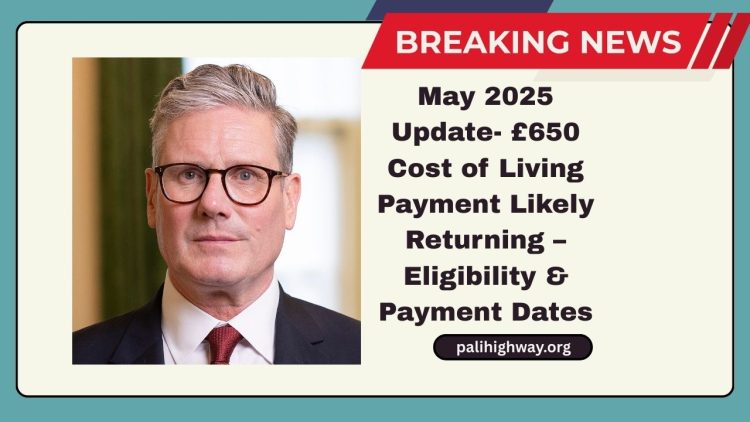As of May 2025, financial strains persist across the United Kingdom, with households grappling with a challenging cost environment.
Inflation remains elevated at 4.7%, driving basic expenses higher and squeezing low- and middle-income families.
In response, discussions around reviving the £650 Cost of Living Payment have gained momentum, aiming to offer critical relief.
Economic Pressures Facing UK Households
Despite efforts to stabilize the economy, the recovery remains uneven. Many essential and discretionary expenses have surged, creating significant hardships for families, particularly those earning under £30,000 annually.
Here is a breakdown of average monthly household costs in 2025:
| Expense Category | Average Monthly Cost (£) |
|---|---|
| Housing (including rent) | 920 |
| Food & Groceries | 295 |
| Transportation | 235 |
| Utilities | 210 |
| Personal Expenses | 85 |
| Clothing | 65 |
| Entertainment | 160 |
| Total | 1,970 |
Households report struggling to meet basic living requirements, making additional support increasingly necessary.
Details of the Proposed £650 Cost of Living Payment
The proposed £650 Cost of Living Payment is intended to mirror previous relief efforts but adapted to today’s circumstances. Early reports indicate:
- Tax-free payments deposited directly into recipients’ bank accounts.
- No impact on existing benefits.
- Eligibility verification through a valid National Insurance number.
- An estimated £37 billion budget being considered for the initiative.
The primary objective is to alleviate pressures from soaring costs in housing, food, energy, and other essential sectors.
Eligibility Criteria for 2025
Eligibility for the renewed payment largely aligns with prior models, focusing on individuals and families receiving certain government benefits. Potential qualifiers include those receiving between January and March 2025:
- Universal Credit
- Working Tax Credit
- Child Tax Credit
- Income-Based Jobseeker’s Allowance (JSA)
- Income-Related Employment and Support Allowance (ESA)
- Pension Credit
- Income Support
Other expected conditions are:
- Low to moderate income status.
- Current tax filings.
- Adherence to a yet-to-be-finalized savings threshold.
How to Claim the £650 Payment
Eligible individuals will not generally need to submit separate applications. Payments will be automatically issued through DWP and HMRC databases, provided benefit records are up to date.
In cases where payments are missed:
- Contact DWP customer service.
- Provide proof of benefit eligibility and income.
- Students, disabled individuals, and those facing unique hardships may be asked for additional documentation.
Ensuring that personal information is accurate in government records is critical to avoid disbursement delays.
Payment Method and Timeline
Funds will be transferred via direct deposit to the account associated with an individual’s National Insurance information. In the event of issues, recipients can request a formal review through the DWP’s appeal process.
While an exact payment timeline is yet to be announced, updates are anticipated shortly given the urgency of ongoing economic challenges.
The possible return of the £650 Cost of Living Payment in May 2025 offers a glimmer of hope for households grappling with surging expenses.
As inflation and everyday costs continue to rise, this financial assistance aims to ease the mounting burden faced by millions across the UK.
Households are encouraged to keep their government records updated and stay tuned for the official announcement regarding eligibility and deposit dates.
FAQs
When will the £650 Cost of Living Payment be officially announced?
Announcements are expected soon as government discussions are already at advanced stages, but no confirmed date has been released yet.
Will receiving the £650 payment affect other government benefits?
No, the payment is tax-free and will not impact the amount or eligibility for other benefits.
Is manual application required to receive the £650 payment?
Manual application is generally not necessary. Eligible individuals will receive the payment automatically based on existing benefit records.

